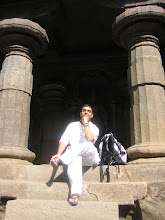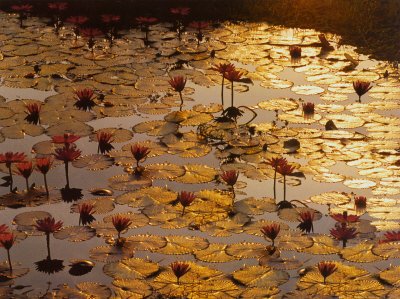When we hear words like, ‘meditation’, ‘nirvana’, and ‘bliss’ we usually associate them with images of meditating hermits in flowing robes or mystical beings floating in the air with enraptured facial expressions and golden halos. What we don’t normally associate the image of a yogi with are words like ‘mopping’, ‘sweeping’, or ‘polishing’. There is often a disconnection between what we do in our “spiritual lives” (like sitting meditation on a cushion) and the everyday, mundane world that involves activities like washing dishes. In a sutta from the Pali Canon, the Buddha tells us that enlightenment is not to be found out there in the farthest reaches of the cosmos but “it is just within this fathom-long body, with its perception and intellect” (4). If this is true then, ultimately, there is no division between our “worldly” and “spiritual” lives. Think about it: what use is twenty minutes of bliss on the meditation cushion if we go through the rest of the day upset and bothered by what we think are useless chores? It is very easy to set up an artificial separation between the sacred and the mundane but one method to prevent this involves using our “chores” as the object of meditation. Our work becomes our practice.
The idea of work practice is especially emphasized in the Ch’an/Zen tradition of China and Japan. One of the most famous sayings on this subject comes from the famous Tang Dynasty master, Layman Pang (龐居士). When he was asked by his teacher, Shitou (石頭希遷), what he had been doing since they last saw each other Layman Pang said (5):
How miraculous and wondrous,A widely quoted restatement of the above phrase is:
Hauling water and carrying firewood.
Before enlightenment: chop wood and carry water.In India, the standard monastic model involved wandering for alms but in China, the tradition of manual labor in the monastery gradually became the norm. Work practice became particularly prominent under the influence of the Tang Dynasty Master Baizhang Huaihai (百丈懷海). Master Baizhang (Hyakujo in Japanese) is widely known for his role in the koan, “Baizhang’s Fox” (6). Furry critters aside, Master Baizhang was also renowned for his emphasis on physical/manual labor as part of Ch’an practice. One famous story tells of how Master Baizhang continued to work in the fields into his 80’s. His students however, felt that an 80-something year old Ch’an master shouldn’t be working as strenuously as the young monks so one day they decided to hide his gardening tools. When Baizhang went searching for tools and couldn’t find them, he was unable to work and therefore didn’t. When it came time for the meal, all of the students were waiting for the elderly master to take his food first but instead of doing so, Baizhang said to the assembly, “A day without work is a day without food!” and went back to his room to meditate. The next day Baizhang, without having worked, refused to eat again. After a few days, his students finally got to message and left his working tools in their usual place. When asked of this, he said, “I’m unworthy, how can I allow others to work in my behalf?”(7)
After enlightenment: chop wood and carry water.
Despite the insight that masters like Layman Pang and Baizhang have, many people still have a hard time (not) separating meditation from plain ‘ol work. Why focus on picking up trash when we could be meditating and entering the deepest meditative absorptions (Pali: jhana), known? A classic story between the very Ch’an-like Ajahn Chah and his student (and later Dharma Heir) Ajahn Sumedho touches on this point. This story, which shall this post, is taken from “Small Boat, Great Mountain: Theravadan Reflections on the Great Natural Perfection”, by Ajahn Amaro (8):
***
“Ajahn Sumedho was a recently arrived monk. He had been there a year or two by this time and was a very serious meditator. He hadn’t been keen to leave the settled life at the main monastery, Wat Nong Pah Pong, but he joined in and there he was—breaking rocks in the sun, pushing barrows of rubble around, and working hard with the rest of the community. After two or three days, he was getting hot, sweaty, and cranky. At the end of the day, after a 12-hour shift, everyone would sit down to meditate and would be reeling. Ajahn Sumedho thought, “This is useless. I’m wasting my time. My meditation has fallen apart completely. This is not helping the holy life at all.”***
He carefully explained his concerns to Ajahn Chah: “I’m finding that all the work we are doing is harmful to my meditation. I really think it would be much better for me if I didn’t take part in it. I need to do more sitting and walking meditation, more formal practice. That would be very helpful for me and it’s what I think would be for the best.” Ajahn Chah said, “Okay, Sumedho. Yes, you can do that. But I’d better inform the Sangha so that everyone knows what’s happening.” He could be really wicked in this way.
At the Sangha meeting he said, “I want to make an announcement to everybody. Now, I know that we have all come up here to make this road. And I know that we are all working hard at breaking rocks and carrying gravel. I know this is important work for us to do, but the work of meditation is also very important. Tan (9) Sumedho has asked me if he can practice meditation while we build the road, and I have told him that this is absolutely all right. I do not want any of you to think any critical thoughts of him. It is absolutely all right with me. He can stay alone and meditate, and we will continue building the road.”
Ajahn Chah was out there from dawn until dusk. When he wasn’t working on the road, he was receiving guests and teaching Dharma. So he was really cranking it out. In the meantime,
Ajahn Sumedho stayed alone and meditated. He felt pretty bad on the first day and even worse on the second. By the third day, he couldn’t stand it any longer. He felt tortured and finally left
his solitude. He rejoined the monks, broke rocks, carried gravel, and really gave himself to the work. Ajahn Chah looked at the enthusiastic young monk with a foot-wide grin and asked, “You enjoying the work, Sumedho?”
“Yes, Luang Por.”(9)
“Isn’t it strange that your mind is happier now in the heat and the dust than it was when you were meditating alone?”
“Yes, Luang Por.”
The lesson? Ajahn Sumedho had created a false division about what meditation is and isn’t,
when in fact, there is no division at all. When we give our hearts to whatever we do, to whatever we experience, or to what is happening around us, without personal agendas or preferences taking over, the space of rigpa (10), the space of awareness, is exactly the same”.
(1) This phrase also happens to be the motto of my Alma mater, DeWitt Clinton High School :)
(2) Oxford English Dictionary Online, http://www.oed.com
(3) BBC News, “Life Amid the Trash Piles of Naples”:
(4) Rohitassa Sutta, Anguttara Nikaya Section 4, Sutta 45, from ‘Access to Insight’,
(5) Andrew Ferguson, “Zen’s Chinese Heritage”, pp. 94-95, Wisdom Publications, 2000
(6) Hyakujo’s Fox, from “Sacred Texts”:
(7) Andrew Ferguson, “Zen’s Chinese Heritage”, pp. 81-82, Wisdom Publications, 2000
(8) Amaro Bhikkhu, “Small Boat, Great Mountain: Theravadan Reflections on the Great Natural Perfection”, pp. 39-40 Abhayagiri Buddhist Monastery, 2003.
The entire book in .pdf form, along with a number of other Abhayagiri Publications, can be found here
(9) ‘Tan’ and ‘Luong Por’ are Thai terms for ‘venerable’ and ‘venerable father’ respective. The latter is used for addressing elder monastics and is roughly equivalent to the Chinese term ‘Shi Fu’ (師父)
(10) ‘Rigpa’ is a Tibetan term for awareness beyond dualism. It’s a translation of the Sanskrit word ‘vidya’ (विद्य). The concept of rigpa is prominent the in Dzogchen and Mahamudra methods of the Vajrayana tradition.








No comments:
Post a Comment